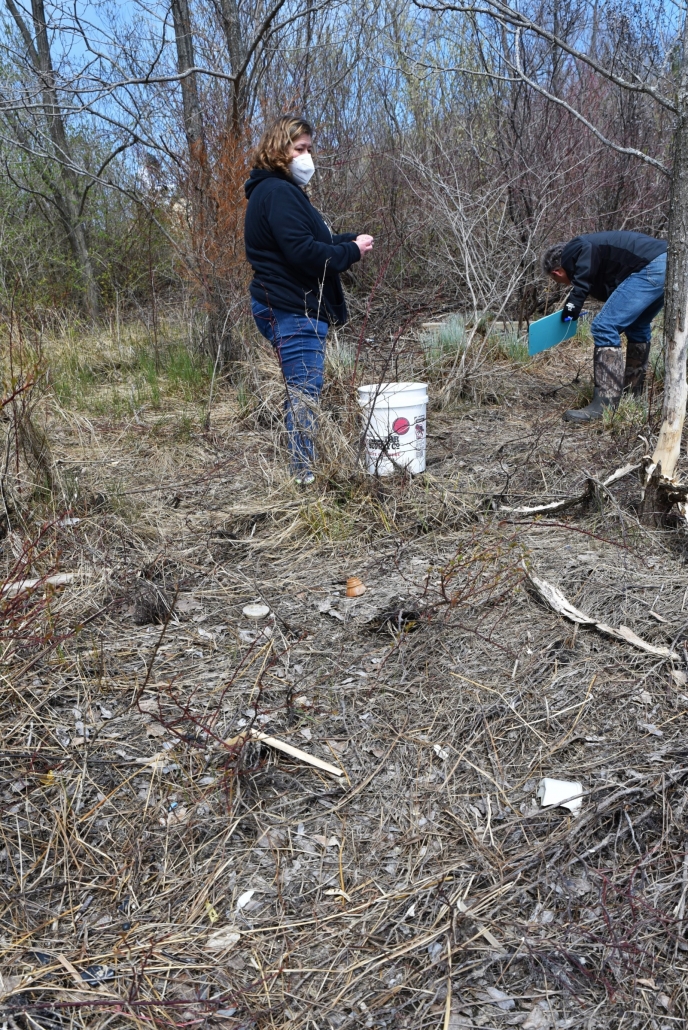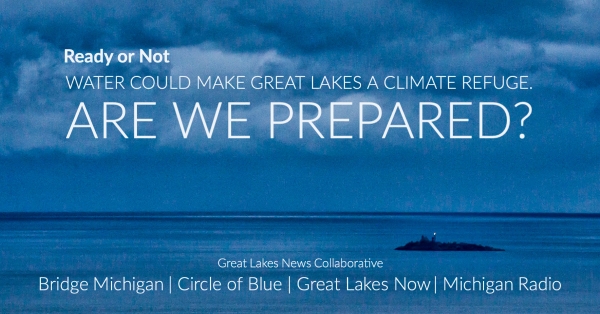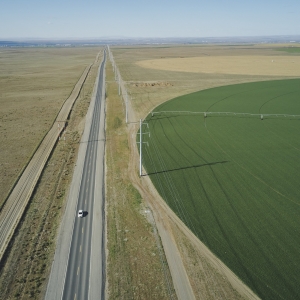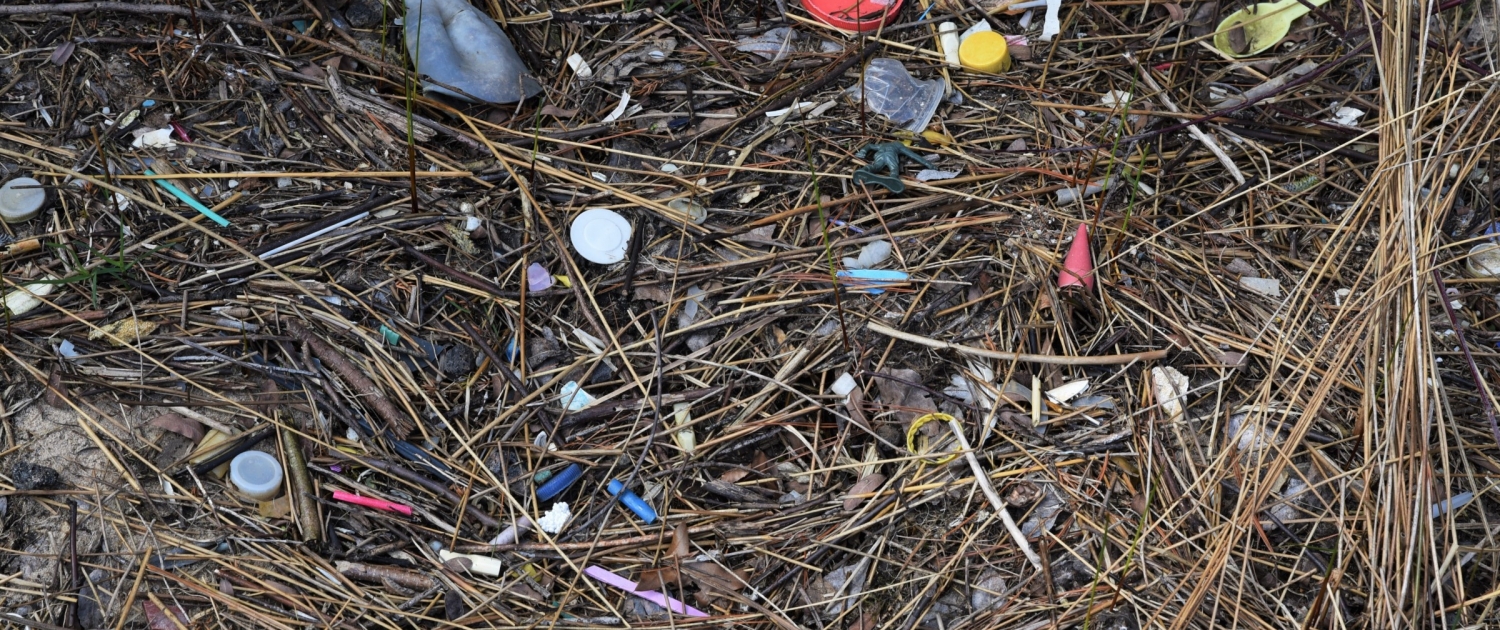
This plastic debris was typical along a channel which connects Lakes Michigan and Duck Lake north of Muskegon. Photo Lester Graham, Michigan Radio
By Lester Graham, Michigan Radio – May 6, 2021
There’s been a lot of news about the amount of plastic debris in the oceans. But, plastic pollution is also affecting the Great Lakes. A study out of the Rochester Institute of Technology estimates 22 million pounds of plastic debris enters the Great Lakes from the U.S. and Canada each year.
The sky is blue and the Lake Michigan water is beautiful, but it’s windy and a bit chilly. Volunteers are gathering at the Duck Lake State Park north of Muskegon.
They’re listening to instructions about picking up trash on the beach and along a channel which connects Lake Michigan and Duck Lake. They’re asked to keep track of the kind of trash and later it’s to be weighed.
Usually, much of the trash is found on the big lake’s beach. Because of high lake levels, more of it is along the channel that connects with Duck Lake. A lot of that trash is deteriorating plastic.
“It just crumbles into little, little tiny pieces and eventually it just becomes almost impossible to pick up,” said Lynn Knopf, chair of Duck Creek Watershed Assembly. She’s leading this event.
This clean-up is part of the Alliance for the Great Lakes Adopt-a-Beach program which organizes these events across the Great Lakes. In a typical year, 15 thousand people volunteer at one of a thousand events.
“consistently, we see that about 85 percent of the litter picked up at Adopt Beach cleanups is made up of plastic,” explained Jennifer Caddick, the spokesperson for the Alliance.
At Duck Lake, there were thousands of pieces of plastic ranging from shopping bags, to plastic forks and spoons and drinking straws. There were also lots of unidentifiable bits of plastic in the water and on the shore.
“We know that plastic pollution never goes away. Right. It just breaks down into smaller and smaller pieces,” Caddick said.
It gets to the point that bits of plastic are about the size of a grain of sand or smaller.
Damage to wildlife
Not only is it unsightly trash on Great Lakes beaches but the plastic can hurt wildlife.
“There’s definitely a lot of wildlife rescue centers that repeatedly get calls for wildlife that may be entangled in fishing line or plastic rings, but for the small stuff, the micro plastic debris, the primary focus there has been on the wildlife eating the microplastic debris,” said Sarah Lowe, the Great Lakes regional coordinator for the National Oceanic and Atmospheric Administration’s Marine Debris Program.
Wastewater treatment plants are not designed to filter out all microplastics such as microfibers. As washing machines clean clothes such as your favorite fleece made from plastic fibers, many of those fibers ultimately find their way into rivers.
Lowe says researchers are taking a closer look at the tiniest microfibers in nature. They’re the primary type of micro plastic being found in fish stomachs.
Scientists are finding some plastic is even becoming part of the fish.
“As our research methods become more sophisticated, we’re able to look at smaller and smaller size ranges and we’re finding that they’re more abundant on the smaller scale,” said Mary Kosuth, a PhD student at the University of Minnesota’s School of Public Health and Environment Health Sciences.
Researchers are now finding plastic microfibers so small, they’re actually in the tissue, the flesh of fish. That means people are eating plastic too.
Researchers are also finding the plastic particles attract chemicals toxic to organisms at the bottom of the food chain as our partners are Great Lakes Now found in this story.
It’s not the only way you’re ingesting plastics.
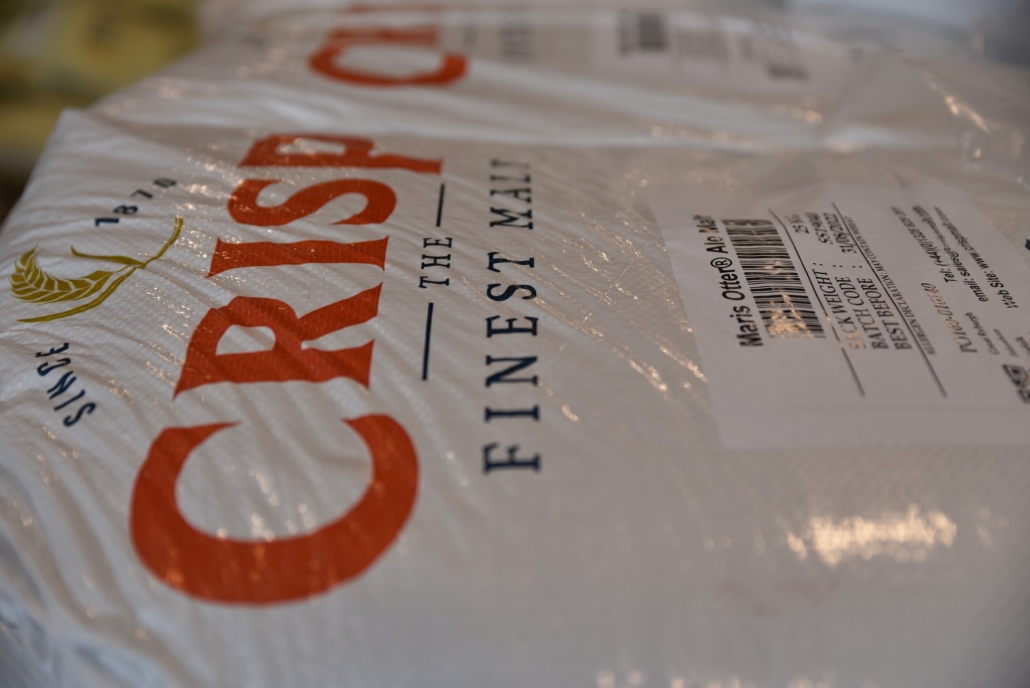
Bags of grain used in brewing are often made of woven polypropylene, a strong plastic. Plastic microfibers from the bags might be getting into the beer of Great Lakes breweries.” Photo Lester Graham, Michigan Radio
It’s in your drink
Kosuth’s own research sampled tap water in several cities in the Great Lakes Region and also sampled beer. She found plastic fibers in both the water and the beer. But something was off. In some cases she found greater amounts of microfibers in the Great Lakes beer than in the water used to make it.
“And (I) found no correlation between the amount that was in the tap water and the amount that was in the beer from, say, the same cities.”
Experts speculated the microfibers might be coming from clothing the workers were wearing or some kind packaging. What Kosuth didn’t realize is that a lot of grain used by brewers comes in bags made of woven threads of polypropylene, a strong plastic.
At Griffn Claw’s brewery in Rochester Hills, the head brewmaster and head distiller Dan Rogers hadn’t heard about plastic in the water or the beer.
But, there were pallets of plastic sacks of grain and larger so-called super-sacks or bulk bags in the brewery. The question was if it made any sense to suspect the bags used to ship grain.
“Yes, it does a lot of these malts are put in woven bags, it’s like a fabric almost. And some of the bags we have, they’re paper, but on the inside, there’s a plastic liner for like a moisture barrier. So, I would say all this grain touches plastic,” Rogers said.
He said he’d start investigating to see what should or could be done at his brewhouse.
As for microfibers in tap water, treatment plants are not yet set up to filter out all these microscopic threads of plastic. One study found even catching 95 to 99 percent of the fibers means tens of millions of plastic microfibers still get into drinking water each day at a typical plant. They’re just too small to catch them all.
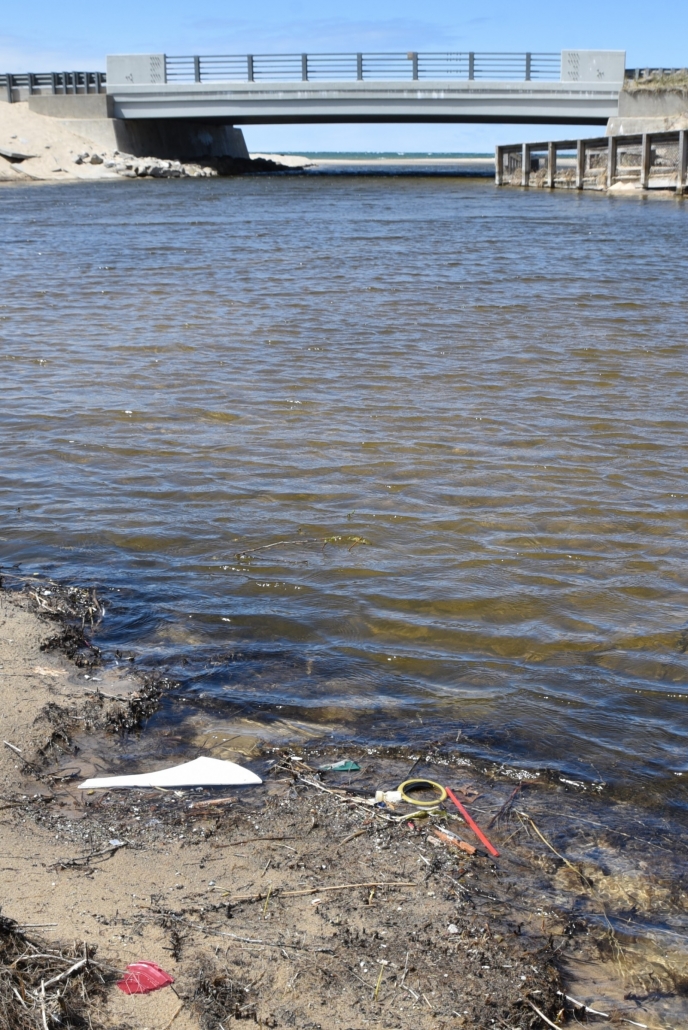
Volunteers worked to pick up plastic trash like this on the Lake Michigan beach (in the distance) and along a channel leading to Duck Lake. Photo Lester Graham, Michigan Radio
Is there a solution?
Single use plastics are pervasive. Some, such as medical devices, are necessary. Plastic packaging is used to prevent retail theft. Some fleeces and other clothing are made of plastic and shed microfibers.
Lynn Knopf stopped picking up trash at Duck Lake State Park for a bit to talk about the problem. Since seeing the mess on the beaches first hand, she’s dedicated to cleaning up what she can and thinking before she buys things.
“You know, it’s something each person has to really look at themselves and decide what the best thing is they can do, but, you know, it all comes down to education and, you know, wanting to make the world a better place, I think.”
Some environmentalists say manufacturers are going to continue to make and sell single use plastics as long as there’s a market. They want the public to put pressure on businesses that make and sell single-use plastic products. They insist we have to find ways prevent those millions of pounds of plastic getting into the Great Lakes and your water, and your beer.
Ready or not — the Great Lakes as a climate refuge
The Great Lakes region is frequently touted as one of the most climate-resilient places in the U.S., in no small part because of its enviable water resources. But climate change threatens water quality, availability, and aging water infrastructure by exposing existing vulnerabilities and creating new ones. In this series, members of the Great Lakes News Collaborative explore what it may take to prepare the Great Lakes region for the future climatologists say we can expect.
Funded by the Charles Stewart Mott Foundation, the collaborative’s four nonprofit newsrooms — Bridge Michigan, Circle of Blue, Great Lakes Now at DPTV and Michigan Radio — aim to elevate discussion, amplify the voice of Michigan residents and produce action that protects the region’s waters for future generations. While Mott provides financial support, our public service journalism is produced independently.

